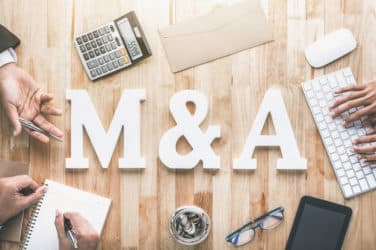
Kevin Cronin, who retired from Invesco at the end of 2023, won Lifetime Achievement at the 2024 Markets Choice Awards.
Markets Media caught up with the long-time buy side trader to learn more.
Please tell us about yourself and your career.

I started in this business after getting an MBA in finance and accounting from Vanderbilt University, at which time I joined Barnett Banks Trust Company as an analyst. As it turns out, due to some unforeseen events, there was an urgent need for a trader, and management decided that since I had a series 7 and 63, that somehow, I made the most sense to become a part-time trader. So I started my career in trading as a part-time trader.
I knew early on, after that somewhat odd introduction to trading, that trading was much more suited to my interests, skills and personality. As the old saying goes, analysts and PMs are in the storage business and traders are in the moving business – and the moving business was just beginning to emerge as an important component of the investment process. It was just more interesting to me.
From there I went to TrustCo Capital Management (part of Trust Company Bank in Atlanta) to be a full-time equity trader and then on to First Union, in Charlotte, as a trader. After a few years, I became Head of Equity Trading at First Union and also took over as the Lead PM on an S&P500 enhanced index fund. As fate would have it, I went to an National Organization of Investment Professionals meeting soon after that and was introduced to Ronnie Stein, who was Head of Trading for AIM in Houston. Ronnie was intrigued that I was among the youngest people in NOIP at the time, and he wanted to figure out why that was. After the meeting we kept in touch until Ronnie decided it was time to hire me – so I went to AIM to be Head of Domestic Equity Trading in March of 1997 – and so began my journey with Invesco. As I recently wrote in a LinkedIn post, I characterize my time at Invesco as three distinct careers: as an Equity Trader, as Global Head of Trading, and most recently as Head of Equity Investments. I could write a book on each, but for now suffice to say that I have had a very interesting and diverse set of opportunities and experiences over the years, and I wouldn’t change any of it. (Well, maybe a few things…)
Why did you decide to retire?
I had an incredible run at Invesco and am so fortunate to have worked with so many great colleagues and to have had so many exceptional opportunities and experiences while I was there. But 27 years is a long time with the same firm, and I came to the realization that it was time for me to try something different – maybe very different – which inevitably meant that I would have to leave Invesco to pursue that. Obviously, I wanted to give Invesco plenty of time to ensure that we transitioned my responsibilities in a thoughtful and responsible way. My CIOs and I had done a considerable amount of work over the past five years to optimize our equity investment platform – so I knew that the timing would be right to bring in the next generation of investment leadership. Fortunately for me, our CEO, Marty Flanagan, and his senior team were very understanding and supportive of my decision, which enabled us to put in place a thoughtful and effective transition plan. I left Invesco very confident in our Equity CIOs and the equity investment platform, and of course I wish nothing but the best for my Invesco colleagues, our clients and the firm.

How did trading evolve over the course of your career?
Well, the short answer is that trading changed dramatically since I did my first trade all those years ago. When I first started trading, there was no OMS – all of our tickets were handwritten (which made partial trades a real treat as we had to do allocations across all accounts manually on new trade tickets), and the only technology we had was an old “DOT” machine, a Quotron (with an alphabetical keyboard – not QWERTY) and a shared Bloomberg terminal. In those days, the Bloomberg terminal was just a proprietary box provided by Bloomberg with amber text and a very odd keyboard. We had pink sheets, an S&P symbol guide and phones – that was pretty much the arsenal at the time. Trading was in 1/8 increments (although NASDAQ might has well have been 1/4’s) and a very busy day saw around 200 million shares trade hands on the “Big Board”.
There were also quite a few more brokers back then – many of which are gone or merged away – firms like Kidder Peabody, Drexel Burnham, Smith Barney, EF Hutton, Troster, etc. Broker research was important – and getting the “first call” was very valuable. The NYSE was a not-for-profit entity, and their market share was well above 80%. In those days, when we wanted to trade an odd lot, we had to pay a mark-up known as the odd lot differential, and “fast” trades happened in minutes – many, many minutes in most cases. Probably the most notable difference was the incessant phone ringing – and being almost entirely dependent on human interaction to complete a trade. Trade settlement was T+5 – and average pricing was just starting to take hold.
So, a pretty stark contrast to today’s trading environment.
How did technology change the trading landscape?
Technology has had a profound impact on the financial services industry – but nowhere has the magnitude of that impact been felt more dramatically than in trading. Honestly, there were so many inefficiencies in the trading markets, and the trading vocation 20 years ago – from workflow process inefficiencies to very limited electronic trading tools – that in many respects made the revolution in technology in trading and markets entirely sensible if not inevitable. Today, armed with sophisticated OMS and EMS tools, traders have so much more control over their orders and a much more diverse array of ways they can interact in the marketplace – from smart order routers to sophisticated generative AI powered algorithms to find liquidity in increments of time not contemplated 20 years ago – or maybe ever.
But of course, it is much more than that – exchanges have become bastions of trading technology and of competition amongst all kinds of technology-enabled trading. Trading markets, while not perfect, have benefited tremendously from technology. Today markets are much more competitive, efficient and resilient – thanks in large measure to the advancement of trading technologies. I would also note that regulation of markets has been significantly enhanced by powerful technology-enabled oversight tools to more effectively surveill the fairness and integrity of markets.
If you had to choose between trading now or back then, which would you choose?
Equity markets have changed pretty dramatically over the years, and for the most part, this change has been very good for market participants – including long-term investors. That said, for me, it would have to be “back then” – because I believe the trader’s role was much more important within the context of the investment process back then – certainly on the equity side of things. I also believe that the value the trader brought to the investment process was much more discernible and attributable to a trader’s specific skill and decision-making abilities.
This isn’t to suggest for a moment that I don’t think traders add value today – they quite clearly do – but it is much more difficult to discern. Of course, the other primary reason why I would choose the old days versus today – comes down to the criticality of relationships back then and the skill required to optimize how the system worked. We spent countless hours getting to know the layout of the floor, the specialist firms and of course the specialists. We had an array of stealthy floor brokers to represent our orders when needed, and we had excellent sales coverage and full access to the position traders and market maker’s capital. Strong negotiating skills, optimally understanding the supply and demand dynamic, knowing how to balance the risk-reward dynamic of making a call or having the temerity to trade a large block at a single price – these were the skills that were on display for nearly every trade.
There were very few days that I left the office unaware of whether or not I had a good trading day. Trading was, as I have said many times before, at the same time more complex and more simplistic than trading today. For me it was stressful but exhilarating.

Is there a “best trade ever” that you remember?
I was very fortunate to have been part of some extraordinary trades over my career — in fact, the older I get, the longer that list of great trades grows in my mind!
Kidding aside, I would seriously struggle to pick just one – and that isn’t because I can’t remember – I remember most of my most significant trades. In fact, one of the benefits of having been in this business as long as I have, is that whenever I would get a visit from a former sales trader, position trader or market maker from Goldman, Merrill, Citi, Morgan Stanley, CSFB, JPM, etc. over the years, I would always end up hearing a story about how I blew up their P&L back in the day on a particular trade I got them involved in. That usually was a pretty good indicator of a very good trade. Maybe one of these brokers would be better able to tell you what my best trade was. Of course, I don’t remember hearing too many stories where the broker made a lot of money…
What else did you find rewarding about your career, other than just trading?
My father was a cancer specialist, so I often and literally grappled with the fact that the career path I had chosen wasn’t curing cancer. That said, there is no question that the work of helping people achieve their investment objectives – of saving to buy a house or to send their kids to college or even for their own retirement – is indeed a noble vocation. So I feel very fortunate to have been in a career that was advancing our clients’ quality of life.
Within the context of that, and beyond my specific roles at Invesco, I really did enjoy the work I did with regulators, industry participants and even Congress over the years, to advance the cause of market structure fairness and integrity for long-term investors. I was lucky enough to be invited to many of the most influential roundtables, congressional testimonies, and industry trade group conferences on the topic of equity market structure – to represent the interests of long-term investors. From NMS to speed bumps, market data and nearly every issue in between, I had the opportunity to at least be part of the discussion, if not to help shape what the structure should be. Such an amazing opportunity – to represent our investors and really all long-term investors in these critical conversations. While I am at it, a big thank you to the SEC, the exchanges, industry groups and other industry participants for including me in so many of these conversations over the years.
What do you do outside work?
I really like to travel – my wife and I spend a lot of time travelling all over the world. I have a son and daughter who are now out of the house and into the working world, and I enjoy seeing them as much as possible. Also, about 10 years ago I started playing guitar – I’m hopeful that with a little more practice, soon I will sound like I have been playing for two years!

What do you think about trading as a career and what advice would you offer new and aspiring traders?
When I started my trading career, I don’t think many people viewed trading – especially on the buy side – as a viable long-term career. In fact, when I pursued the CFA designation many years ago, there was no choice for a trader on the admissions form, so I had to write “other” and then I had to explain/justify how trading would provide the necessary work experience required to fulfill the CFA requirements beyond passing the exams.
My point is that the vocation of trading was not really thought about as a valuable component of the investment process – nor was it viewed as a great training ground for long-term investment careers. That paradigm of thought has changed dramatically over the years in the equity world and most certainly beyond – as a trading career has become fertile ground for launching wildly successful careers.
Don’t get me wrong, I’m not taking a victory lap here trying to take credit, but I do think that my career has served as a very good case study for those trying to understand how a trading career can develop and where it can lead. I started in this business as a part-time trader and ended my career at Invesco as Head of Equity Investments with peak assets of over $310 billion – not bad for a kid from Kentucky.
My advice to the next generation is simple: the best investment you will ever make is the continuous investment in you! Keep learning, stay ahead of the curve, embrace technology and innovation, and don’t be complacent. There will always be challenging days, but fear not, because there will always be great opportunities for smart, hard-working, and forward-thinking people.
What’s next for you?
I have had some very interesting conversations about my future with a variety of industry and non-industry participants. For now, suffice to say that whatever I choose to do, I want to have fun, be a leader, and do work that is impactful, innovative, fulfilling and relevant. In other words, something that is a fitting second act to a pretty extraordinary first act!






